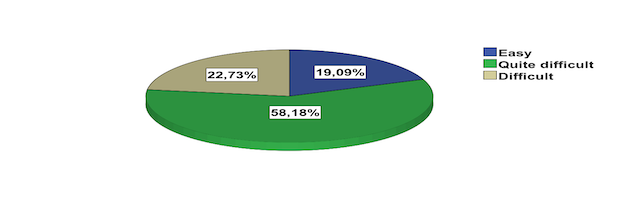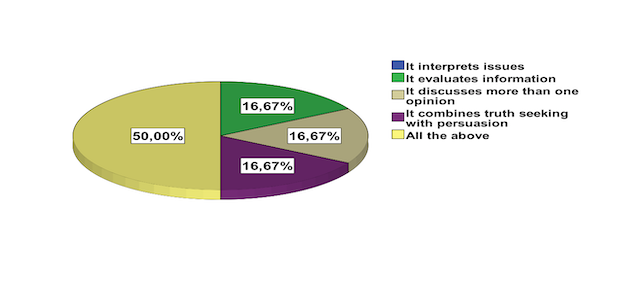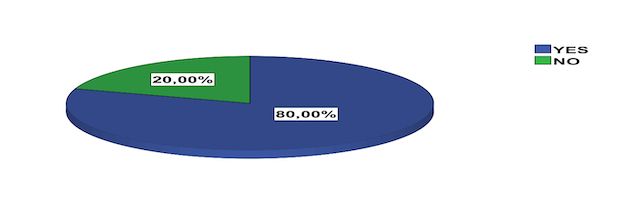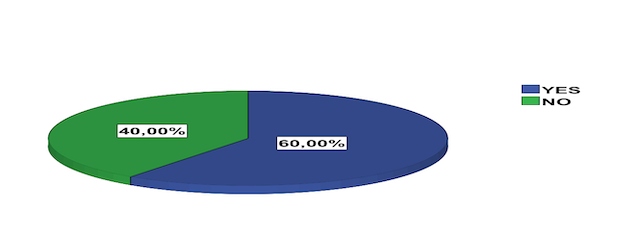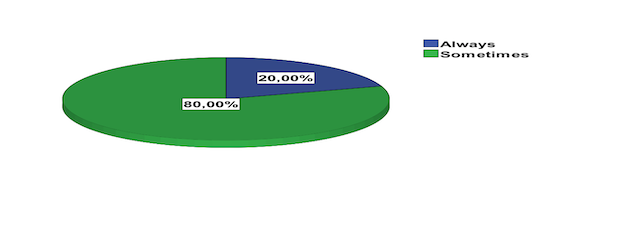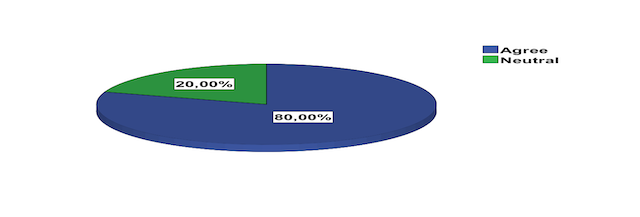Introduction
Texts, as communicative events, are considered by modern theorists as lacking of independent meaning. They create what scholars call ’’intertextual’’. In the reading process, readers are thrust into a network of textual relations. Those relations help in interpreting a text or discovering its meaning or meanings. A text’s meaning is built by all other texts to which it refers or connects, and they become the outcome of intertextual process (Allen, 2000). Bazerman (2004) defines intertextuality as “the explicit and implicit relations that a text or an utterance has to prior, contemporary and potential texts” (p, 86). He states that through those kinds of relations a text stimulates representation of the discourse situation, the textual resources that sustain the situation, and how the present text locates itself and draws on other text. In this sense, intertextuality is a crucial aspect in every text. It is about the interaction of various texts keeping a dialogic relationship between them in which one text dwells and echoes within another text creating a new effect (Mulatsih & Rifki, 2012).
The idea of intertextuality was originated in the twentieth century in the seminal work of Ferdinand de Saussure. His focus on the systematic features of language established the relational nature of meaning and thus text (Allen, 2000). Later, this notion was discussed by the poststructuralist, Kristava, who described the concept of intertextuality as the relationship between text, writer and reader (Armestrong & Newman, 2011). Kristava assumed that intertextuality existed as a universal phenomenon that clarifies the communicative interconnections between a text and context (ibid, 2000). The notion of intertextuality is said to have crossed from cultural literary studies to applied linguistics by means of De Beaugrandee and Dessler’s ’’standards of textuality’’ in which they focus on the factors that make the production of one text dependent upon knowledge of one or more previously encountered texts (Peter, 2015).
The concept of intertextuality generally discusses how sociocultural context is significant and connected to any specific text and how the rules of a particular genre affect the perception and production of a text. In other words, intertextuality helps learners to focus on the text’s ideas and views rather than its wording and linguistic features. It aims to display a context-specific comprehension of a text, while explaining the existence of other possible meanings in the background knowledge (Mansooji & Mohseni, 2016). Intertextuality has a great effect on many facets of learners’ composition pedagogy. It enhances writing across the curriculum as a method for introducing students to different discourse regularities. It asserts the value of critical reading as the basis of classroom’s composition. Intertextuality, also, requires rethinking about the idea of imitatio and consider it as an important stage in the linguistic development of learners’ writing (Porter, 1986).
In EFL writing classrooms, teachers tend to focus more on form-instruction when grammatical accuracy is a priority. This kind of instruction is essential but not sufficient. In teaching critical writing, learners need to involve all their linguistic abilities and think critically in order to compose their texts. Since critical writing is a productive skill, it grows out of texts that learners read. A controversial text reading can be an indicator for discussion or a written passage which stimulates learners’ competencies in creating their own texts (Harmer, 2001). Integrating reading multiple texts in writing classes does not only reveal texts texture and grammar, but also it enables learners to establish a relationship between different texts, interpret them and create their new discourse. In this case, the juxtaposition of texts or “intertextuality” is at work when texts, media and genres are connected and used as reference to compose another text (Ahangari & Sephran, 2013). The implementation of intertextuality in writing classes can stimulate and improve both critical thinking and writing.
Critical writing is a difficult task in EFL learning and teaching. Learners usually experience many difficulties when they attempt to argue some topics or solve problems. Those difficulties do not only stem from the use of text markers and connectives, sentences combining and text coherence, but also from the demand of specific knowledge and skills which are based particularly on critical thinking skills (Oostdam, 2005). In this case, writing teachers struggle to find out suitable procedures and techniques which enhance learners’ critical writing. Since there is an interrelationship between critical writing and reading, EFL teachers adopt multiple texts approach or intertextuality as a way to develop learners’ writing. In fact, this method can reinforce certain kind of learners’ critical thinking as well as their critical writing.
Since critical writing is an act of creation and expressing ideas, it needs specific kinds of instruction uniquely different from other skills. Integrating multiple texts approach (intertextuality) in writing classroom can affect learners’ critical writing. In order to investigate the relationship between intertextuality and EFL critical writing, this study attempts to answer the following questions :
-
Does intertextuality improve EFL learners’ critical writing in the classroom context ?
-
To what extent does intertextuality affect EFL learners’ critical writing ?
1. Methodology
In order to answer the research questions of the present study, two methods are selected, quasi- experimental or one-group pretest and posttest, and quantitative. Due to the nature of this research, the two designs are the most appropriate. The quasi-experimental design is helpful since it seeks to establish a relationship between variables regarding causation, i.e. the change in the dependant variable (critical writing) occurs following the introduction of the independent variable (intertextuality). Additionally, the quantitative method uses statistical analysis to obtain findings. The main features of this method are the use of systematic measurements and statistics (Marczyk et al., 2005). On the basis of these methods, the data are collected from two questionnaires that are addressed to five teachers and one hundred and ten students. Then, an experimental study was conducted on twenty five students through a pre-test, two sessions, and a post-test. The experiment allows the researcher to observe and identify the change at the level of learners’ performance in critical writing. The analysis and the representation of the results was accomplished by using the SPSS (Statistical Package for the Social Sciences) system version 19, 2010 in which results was represented in form of tables and pie charts. In the case of the pretest and the posttest, the data analyses are based on statistical analysis including the mean (M) and the standard deviation (SD).
2. Results and Discussion
2.1. Students’ Questionnaire Analysis
Students’ questionnaire consists of three sections :
2.1.1. Section One : Students’ Attitudes towards Writing Skills
Question 1 : Writing is an important skill for EFL students ?
Figure 1. Writing Skills’ Importance
Question 2 : Writing is a difficult task to study ?
Figure 2. The Difficulty of Writing Skills
Question 3 : Essay writing is a difficult task ?
Figure 3. The Difficulty of Essay Writing
Question 4 : The most difficult kind of essay writing is ?
Figure 4. The Most Difficult Kind of Essay Writing
The first section of students’ questionnaire was devoted to describe students’ attitudes towards writing skills. The results obtained from this section reveal that the majority of students (88.18 %) are aware of the importance of writing in EFL classes. Also, they find writing skill in general, and essay writing in particular as a difficult task to study since writing skill is the most difficult productive skill in EFL. Additionally, they think that argumentative essay is the most difficult kind of writing (72.73 %) because, as we assume, it requires active thinking skills.
2.1.2. Section Two : Students’ Awareness of Critical Writing
Question 5 : Do you know what critical writing is ?
Figure 5. Students’ Awareness of Critical Writing
Figure 6 : Critical Writing Definition
Question 6 : Do you know what “an argument” is ?
Figure 7. Students’ Awareness of Arguments
Figure 8. Argument’s Definition
Question 7 : The task of writing arguments is difficult due to ?
Figure 9. Difficulties in Arguments’ Writing
Question 8 : You present your arguments’ supporting ideas in a form of ?
Figure 10 : The Form of Arguments’ Supporting Ideas
Question 9 : You mention the counter arguments in your writing ?
Figure 11. Counter Arguments in Argumentative Essays
Question 10 : In writing the counter arguments, you try to ?
Figure 12. The Way of Counter Arguments’ Writing
This section of the questionnaire is tailored to investigate the students’ awareness of critical writing. The results obtained from this part reveal that the majority of students have a general knowledge about critical writing (76.05 %) and arguments (96.16 %). However, they find difficulties when they write their arguments. Those difficulties stem mainly from the lack of the topic knowledge (49.09 %), and the ignorance of argumentative essay’s structure (27.27 %). Since arguments should be supported, students tend to utilize examples (69.09 %) in their argumentative writing because they find them the easiest as beginner writers. In addition, they sometimes acknowledge the counter arguments (73.64 %) by different ways such as listing information and commenting (42.73 %).
2.1.3. Section Three : Students’ Awareness of Intertextuality
Question 11 : In the writing session, do you read multiple kinds of texts ?
Figure 13. Reading Multiple Kinds of Texts
Figure 14. Kinds of Texts Used in the Classroom
Question 12 : In reading a text, your focus is on ?
Figure 15. Text’s Reading
Question 13 : While reading multiple texts do you make an intertextual relation between them ?
Figure 16. Making an Intertextual Relation between Texts
Question 14 : When reading texts, identifying their arguments is ?
Figure 17. Identifying Multiple Texts’ Arguments
Question 15 : Evaluating other texts’ arguments is ?
Figure 18. Evaluating Other Texts’ Arguments
Question 16 : Reading multiple texts’ arguments help you in writing about your own arguments ?
Figure19 : Reading Multiple Texts’ Arguments and Writing
Question 17 : Which technique do you use when writing others’ arguments ?
Figure 20. Techniques of Writing Others’ Arguments
The third section of the questionnaire, as we have seen, turns around students’ awareness of intertextuality. The results show that second year students read multiple texts in the written comprehension and expression sessions (86.36 %). Those texts are varied between narrative, descriptive, argumentative, and expository. The questionnaire’s subjects state that when they read a text their focus is on all its features (45.45 %) mainly its content (25.46 %). Students, while reading multiple texts, claim that they make intertextual relations between them since this helps them to understand texts. However, they find identifying and evaluating other texts’ arguments as a difficult task due to the lack of critical reading. Additionally, the most of them (76.36 %) agree that reading multiple texts’ arguments help them in writing their arguments. That is to say, they are aware of the importance of intertextuality. This appears in using some techniques of intertextuality namely paraphrasing, summarizing and quoting.
In sum, Students’ Questionnaire revealed that second year students aware of the importance of critical writing although they encounter difficulties when they use it. Also, they find reading multiple texts arguments and making intertextual relations between them an appropriate way to improve both their critical reading and writing.
2.2. Teachers’ Questionnaire Analysis
Unlike Students’ Questionnaire, Teachers’ Questionnaire consists of two sections. The first tackles teachers’ opinions about critical writing and the second discusses intertextuality and critical writing.
2.2.1. Section One : Teachers’ Opinions about Critical Writing
Question 1 : Critical writing is an important skill for EFL students ?
Figure 21. The Importance of Critical Writing
Question 2 : Your students’ level in critical writing is ?
Figure 22. Students’ Level in Critical Writing
Question 3 : The main characteristic of critical writing is listing arguments ?
Figure 23. The Main Characteristic of Critical Writing
Question 4 : Do you think that writing arguments is important for EFL students ?
Figure 24. The Importance of Writing Arguments
Question 5 : Critical writing is a difficult task because of ?
Figure 25. Reasons of Writing Arguments
Figure 26. The Difficulty of Critical Writing
Question 6 : In writing an argumentative essay, students find difficulties in ?
Figure 27. The Difficulty of Argumentative Essay Writing
Section One of the questionnaire is devoted to tackle teachers’ opinions about critical writing. The obtained results reveal that all teachers writing see that critical writing is an important skill in EFL classes. Also, they asserted that the majority of students have a low level in this kind of writing. This is because they still at the early stage of learning writing. Concerning the main characteristic of critical writing, (60 %) agree that listing arguments is the main feature. Additionally, they state that writing arguments is an important skill since it interprets issues, evaluates information, discusses more than one opinion, and combines truth seeking with persuasion. However, they claim that students find difficulties when they write critically, mainly because of the ignorance of an argumentative essay structure and the lack of the topic knowledge. The difficulty of argumentative essay writing, as teachers indicate, is found in presenting the counter arguments and writing the argumentative thesis.
2.2.2. Section Two : Intertextuality and Critical Writing
Question 7 : Do you use intertextuality when teaching writing ?
Figure 28. Using Intrtextuality in Teaching Writing
Question 8 : Do you ask your students to make intertextual relations between texts ?
Figure 29. Making Intertextual Relation between Texts
Question 9 : Your students find difficulties when reading argumentative texts ?
Figure 30. Argumentative Texts reading’ Difficulty
Question 10 : Using intertextuality improves learners’ critical writing ?
Figure 31. The Effect of Intertextuality on Learners’ Critical Writing
Question 11 : Intertextuality builds schemata for critical writing ?
Figure 32. Intertextuality as Schemata Building for Critical Writing
The second section of teachers’ questionnaire tackled the relation between intertextuality and critical writing. The findings show that the majority of written comprehension and expression teachers (80 %) utilize intertexuality in teaching writing. They also push their students to make an intertextual relation between different texts. This relation is based on structure, content and purpose. In addition, teachers writing (80 %) assert that students find some difficulties when they read argumentative texts. The reason behind this difficulty is the lack of critical thinking. In this sense, they agree (80 %) that intertextuality improves learners’ critical writing, and builds schematic knowledge for this kind of writing.
In brief, Teachers’ Questionnaire asserted that critical writing is a significance skill in EFL classes. In addition, it showed that ignorance of argumentative essay conventions is the main difficulty of this kind of writing. Moreover, the questionnaire revealed that intertextuality approach can improve students’ critical writing by building schematic knowledge which enhances in many ways EFL learners’ critical writing.
2.3. Pretest and Posttest Results
After conducting the pretest, the training sessions, and the posttest, the researcher corrected the students’ drafts and classified their scores. In order to compare the results of the two tests, the standard deviation (SD) statistical analysis is used. According to Marczyk, DeMatteo & Festinger (2005) “standard deviation is a measure of variability indicating the average that scores vary from the mean” (p. 92). It is calculated according to the following equation :
Table 2 shows that there is a difference between students’ scores in the pretest and the posttest in terms of Mean and SD. In the pretest the mean is 6.92 ; however, in the posttest is 8.40. Thus, one can say that students’ scores in the pretest are lower than those in the posttest. Also, these results indicate that the training sessions yielded positive results and improved the learners’ critical writing in which learners learned the nature of an argument, how to make relation between texts’ arguments, how to support their arguments, and how to acknowledge the opposing arguments. The effectiveness of those sessions stems from the correct evaluation of the pretest. On the other hand, SD values in both pretest and posttest are close to the mean. Therefore, we can conclude that the level of students is not different within the same group which helps teachers to design lessons that fit with the all students’ levels.
Conclusion
The main purpose of the present research was to investigate the impact of integrating intertextuality in teaching critical writing to second year LMD students at the Department of Letters and English Language, Kasdi Merbah Univesity Ouargla. The major results obtained from the two questionnaires revealed the importance of critical writing in the EFL classroom. Also, they showed that second year LMD students have an idea about critical writing, but they fail when they tend to use it. In addition, they indicated that the majority of teachers find that intertextuality is a suitable way to improve students’ critical writing, and stated that is a tool to build schemata for critical writing. Similarly, the outcomes of the quasi-experimental study (the pretest, the training sessions, and the posttest) revealed the effectiveness of the training sessions that are based on different stages and activities ; and exposed learners to multiple texts.


















